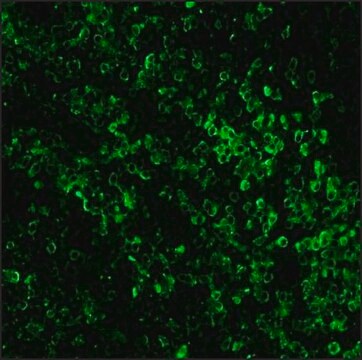MABF317
Anti-CD3ε (mouse) Antibody, PE, clone 145-2C11
clone 145-2C11, from hamster(Armenian), PE
Synonyme(s) :
T-cell surface glycoprotein CD3 epsilon chain, T-cell surface antigen T3/Leu-4 epsilon chain, CD3e
About This Item
Produits recommandés
Source biologique
hamster (Armenian)
Conjugué
PE
Forme d'anticorps
affinity isolated antibody
Type de produit anticorps
primary antibodies
Clone
145-2C11, monoclonal
Espèces réactives
mouse
Technique(s)
activity assay: suitable
flow cytometry: suitable
immunohistochemistry: suitable
immunoprecipitation (IP): suitable
western blot: suitable
Isotype
IgG
Numéro d'accès UniProt
Conditions d'expédition
wet ice
Modification post-traductionnelle de la cible
unmodified
Informations sur le gène
mouse ... Cd3E(12501)
Description générale
Application
Qualité
Flow Cytometry Analysis: 0.25 μg of this antibody detected CD3ε in one million C57BL/6 mouse splenocytes.
Description de la cible
Autres remarques
Vous ne trouvez pas le bon produit ?
Essayez notre Outil de sélection de produits.
Code de la classe de stockage
10 - Combustible liquids
Classe de danger pour l'eau (WGK)
WGK 2
Certificats d'analyse (COA)
Recherchez un Certificats d'analyse (COA) en saisissant le numéro de lot du produit. Les numéros de lot figurent sur l'étiquette du produit après les mots "Lot" ou "Batch".
Déjà en possession de ce produit ?
Retrouvez la documentation relative aux produits que vous avez récemment achetés dans la Bibliothèque de documents.
Notre équipe de scientifiques dispose d'une expérience dans tous les secteurs de la recherche, notamment en sciences de la vie, science des matériaux, synthèse chimique, chromatographie, analyse et dans de nombreux autres domaines..
Contacter notre Service technique